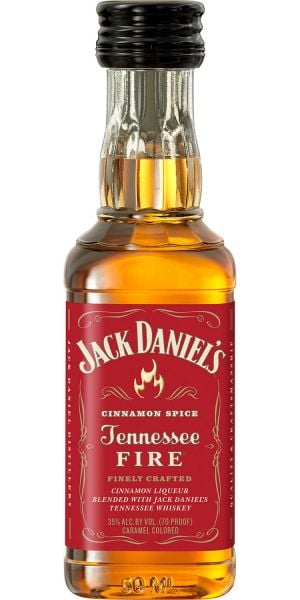Discover the Art of Distillation: Discovering the World of Alcohol and Scotch
The detailed procedure of distillation has formed the globe of liquor and whiskey right into a world of exceptional workmanship and diverse flavors. From the ancient beginnings of distillation to the contemporary advancements in techniques and devices, the journey of just how spirits are crafted is a remarkable one. As we check out the large range of spirits produced around the world, each with its distinct attributes and cultural value, we start to recognize the abundant tapestry of tastes waiting to be uncovered. Join us as we look into the globe of liquor and whiskey, where custom meets technology to produce a symphony for the detects.
The Origins of Distillation
How did the ancient human beings initially find the art of distillation that would certainly later on reinvent the production of spirits and scotch? The origins of distillation can be traced back to ancient Mesopotamia and Egypt, where very early experiments were performed to different alcohol from fermented drinks (Buy Jack Daniel's Tennessee Whiskey Online). The procedure of purification includes warming a liquid to create vapor and after that cooling it to condense the vapor back right into a fluid form, allowing for the removal of purer alcohol
The ancient Greeks additionally developed these techniques, with significant numbers like Aristotle exploring the concepts of purification. However, it was the Arab alchemists during the Islamic Golden Age that made substantial innovations in purification modern technology, laying the structure for modern purification methods.
Purification Strategies and Tools
Distillation techniques and equipment play an important duty in the manufacturing of spirits and bourbon, guaranteeing the removal of pure alcohol from fermented liquids. The procedure includes heating the fluid to create vapor and afterwards cooling it to condense the vapor back into a liquid type, separating the alcohol from other parts. There are various distillation approaches utilized in the market, consisting of pot still distillation, column purification, and constant purification.
Pot still purification, the earliest method, entails a straightforward set process where the fluid is heated up in a pot still, and the alcohol vapors are accumulated and compressed. Column purification, on the other hand, utilizes a column with several plates or trays to attain an extra effective and continuous purification procedure. Constant distillation systems, like the Coffey still, enable a constant flow of fluid with the system, resulting in high-proof alcohol production.
Purification devices varies from typical copper pot stills to modern stainless steel columns, each offering special advantages in terms of taste profiles and efficiency. The selection of devices and method greatly affects the end product's quality and characteristics.
Diverse Varieties of Liquor Worldwide

Scotch whisky, made in Scotland, is understood for its peaty and complicated tastes stemmed from the country's malted barley and traditional aging process in oak barrels. In contrast, the durable and pleasant bourbon whiskey hails from the USA, particularly Kentucky, where it is crafted mostly from corn.
Relocating to the Caribbean, rum takes the limelight with its sugarcane origins and varied profiles ranging from light and crisp to rich and dark. Tequila, Mexico's renowned spirit, is made from the blue agave plant and flaunts a wide variety of designs, from earthy blanco to aged añejo varieties.

Whiskey Styles Throughout Various Areas
Discovering read this article the globe of scotch reveals a diverse selection of styles originating from different areas, each providing an unique preference and character formed by local active ingredients and purification methods. Scotch whisky, coming from Scotland, is understood for its smoky, peaty tastes, with areas like Islay generating especially robust malts. Irish whiskey, on the other hand, has a tendency to be smoother and lighter, frequently triple-distilled for a crisp finish. American bourbon, a corn-based whiskey, is aged in new charred oak barrels, providing it a pleasant and caramelized account. Tennessee whiskey, very closely pertaining to bourbon yet with an added charcoal filtering system process called the Lincoln County Refine, boasts an unique mellow flavor.
Japanese whisky, influenced by Scotch practices, has actually gained worldwide acknowledgment for its careful craftsmanship and well balanced tastes. Canadian whisky, typically made from a mix of grains, is known for its smooth and light features. Each area's whiskey design reflects its distinct heritage, environment, and production methods, offering enthusiasts an abundant tapestry of tastes to explore.
The Future of Distilled Spirits
With an ever-evolving international taste buds and a raising demand for development in the spirits market, the future of distilled spirits provides a landscape ripe for exploration and creative thinking. As customer choices remain to shift towards artisanal and unique products, distillers are forced to press the limits of standard purification methods. This shift has actually brought about a surge in speculative distilling techniques, such as barrel aging in non-traditional timbers, mixing spirits from various regions, and using different grains for purification.
Additionally, sustainability and environmental This Site consciousness have actually come to be critical factors shaping the future of distilled spirits. Distilleries are increasingly concentrating on minimizing their carbon impact, implementing green methods, and sourcing neighborhood ingredients to develop a much more lasting product. This pattern is not only driven by consumer need for morally created spirits but additionally by a real commitment within the industry to lessen ecological effect.
In the coming years, we can expect to see an ongoing focus on technology, sustainability, and diversity on the planet of distilled spirits, as distillers strive to satisfy the progressing preferences and values of the modern-day consumer.
Conclusion
To conclude, the art of purification has an abundant background and varied strategies that have actually been perfected over centuries. From the origins of purification to the wide range of alcohols available worldwide, this ancient technique continues to evolve and innovate. Bourbon, specifically, showcases the unique styles and flavors that various areas offer the table. As modern technology advances, the future of distilled spirits looks appealing, with brand-new possibilities coming up.
The intricate procedure of purification has actually formed the globe of alcohol and whiskey right into a world of unparalleled craftsmanship and varied tastes.How did the old people initially uncover the art of purification that would certainly later on revolutionize the manufacturing of spirits and bourbon?Purification techniques and tools play a vital function in the manufacturing of spirits and scotch, making certain the extraction of pure alcohol from fermented liquids. There are different purification techniques utilized in the industry, consisting of pot still distillation, column distillation, and continual distillation.
Column distillation, on the various other hand, makes use of a column his explanation with multiple plates or trays to attain a more reliable and continuous purification process. Buy Jack Daniel's Tennessee Whiskey Online.